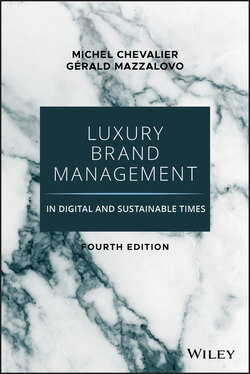Читать книгу Luxury Brand Management in Digital and Sustainable Times - Michel Chevalier - Страница 48
The Fashion Cycle
ОглавлениеIn the world of luxury fashion, everything boils down to the fashion cycle, as illustrated in Table 2.1.
The cycle starts when fabric manufacturers present their new samples of materials. They offer new colors, new fabric touches, and new designs. Each year, in September or October, designers visit the fabric manufacturers in Paris (Première Vision) and Italy (Idea Como) to select the colors and feel they will use for their next Fall–Winter collection. To get exclusivity on a given design, they have to commit themselves to the purchase of a minimum number of yards of the fabric that will provide the special look of their collections for the next year.
They then go back to their studios and prepare the collections for the February/March fashion shows, which will, of course, be attended by the media and by buyers from department and multibrand stores all over the world. These buyers come with specific budgets for each brand and make firm orders for the items that they believe they can sell in their stores.
The dresses are then manufactured and delivered, by July at the latest, to be presented in September as the “new Fall–Winter collection.” It is only at the end of the bargain period, at the end of February of the following year, that they will know how successful they have been with a given collection, how much has been sold at full price, how much at bargain prices, and how much is left over at the very end of the process.
The fashion cycle lasts 18 months. During that same period, of course, another Spring–Summer collection will be committed, selected, presented, and delivered, and results will not be known until the very end of the cycle. This is why, when a company decides to change its designer, the new stylist will need a minimum of two years to impose a new style, to define his or her personal view of the brand, and to make it a success.
Some brands have tried to get out of this straitjacket by having additional, interim collections (the so-called cruise collections), but the system remains quite rigid. Some newcomers in the mass-market segment, such as Zara, have rejected the traditional system and develop 26 collections a year. However, unless they deal with very high volumes, they have difficulty purchasing exclusive materials and are forced to present collections produced mainly in plain or standard fabrics.
This time frame forces brands to plan a long time ahead, and it is a long time before consumers can really see major changes in styles or in brand positioning in their local stores.
